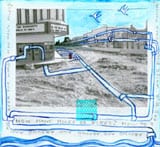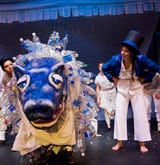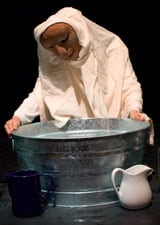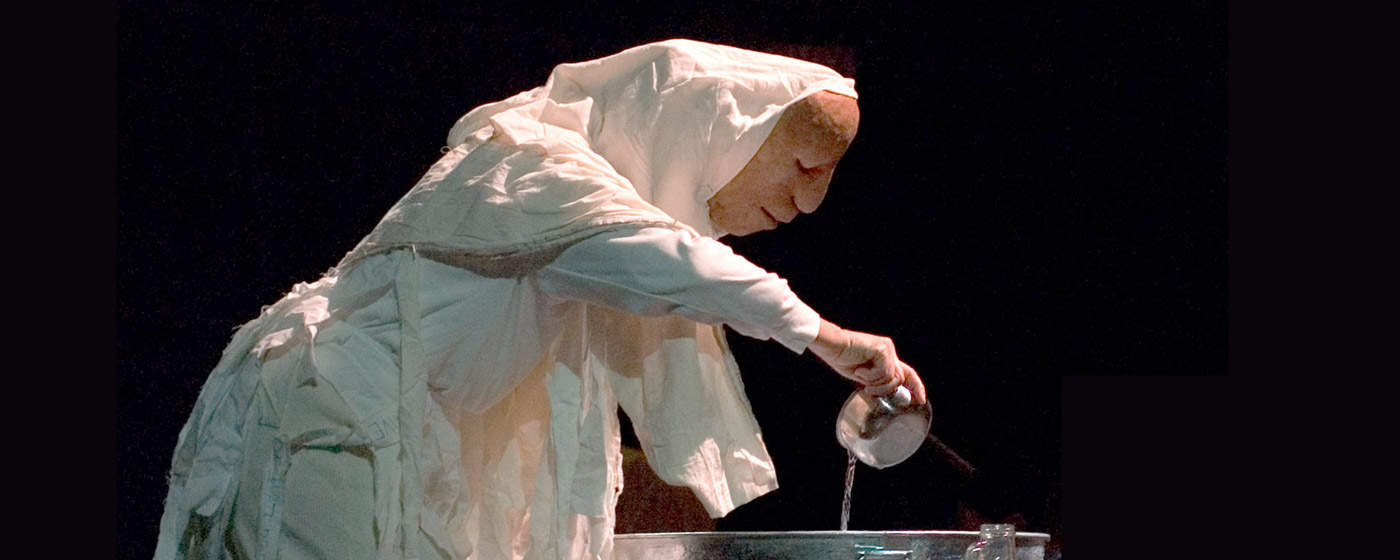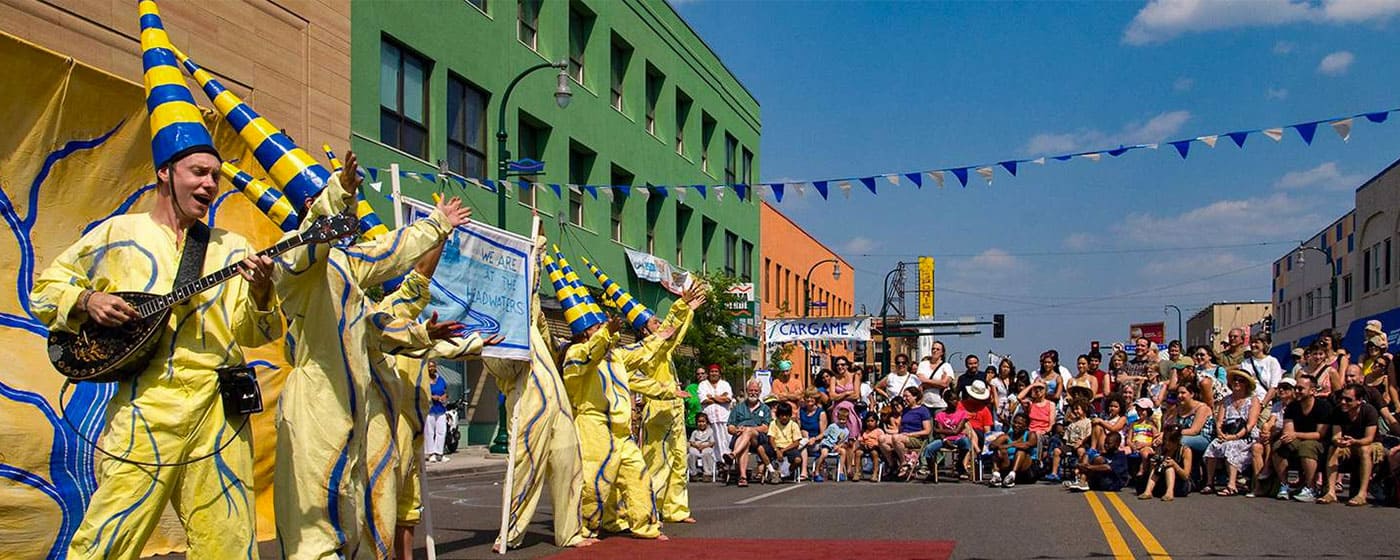Invigorate the Common Well is an Initiative:
To inspire gratitude for Water, one of the most precious gifts of life.
To listen to the teachings of water toward the interconnectedness of all life, as it tunes our hearts and minds towards the value of “THE COMMONS”, a founding principal of the USA.
To invest our financial and imaginative resources towards “THE COMMONS” - the non-partisan, collective assurance of healthy water for all - with a faith that sustainable, healthy systems are possible within urban and rural settings.
To connect our drinking water, and all our local water practices to the Mississippi River Watershed,-- to understand that our bodies, our individual practices, are literally part of the Mississippi Watershed.
To connect our local drinking water experience with the large issues facing global water quality, consumption, conservation, and ownership - that the Mississippi Watershed connects with all the Water in the world.
To conduct public art/ecology residencies throughout the region to invigorate public wells (drinking fountains) as places of meeting, of physical and spiritual sustenance while educating and engaging the public in major local and global water concerns.
To discourage the proliferation of plastic water bottles mounting up in land fills of the world.
To encourage the collective power of individual citizens toward water stewardship in everyday practices, enacting positive change upon the problems created by the accumulation of the individual actions.
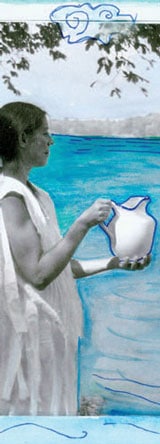
Invigorate the Common Well - Project Background
Invigorate the Common Well began with the emblematic renewal of the drinking fountain in the Avalon Theater Lobby (In the Heart of the Beast Theatre) as an act of commitment for the stewardship of Water
Notes from Sandy Spieler, 2005
Why Do This?
The public drinking fountain in the lobby of In the Heart of the Beast Puppet and Mask Theater does not work. The reason why the fountain does not work is not immediately clear. The repair of the fountain would necessitate breaking into the wall of the theater to examine the hook-up of our water pipes to the city water system. Imagining this to be costly, complicated, messy, and "a bigger problem that it is worth", we have delayed such repair for many years.
By turning our backs to the problems of our fountain, we have inadvertently turned our priorities away from the conscious care of the communal gift of water. Instead, we have sold bottled water in plastic bottles to our audiences. By ignoring our fountain and selling water in plastic bottles, we are encouraging the marketing of water as an individual commodity rather than assuring the collective right of people to clean water. The use of water in individual plastic bottles is rising. Some people choose this bottle system because they are wary of the quality of the city’s drinking water. Others use it for convenience because public fountains are becoming more and more difficult to find. But are plastic bottles a solution to these problems?
Plastic bottles are fast becoming a waste nightmare, and the purchase of water in individual bottles inadvertently supports the beginning stages of water privatization. There is growing public awareness about the hazards of water pollution, but much less awareness about the complex issues of water privatization. The use of plastic water bottles is a graspable entry point into both of these major water issues, and since the use is so prevalent, it impacts thousands and thousands of citizens.
Instead of turning to plastic bottles, we will now turn our attention to the aspects of drinking fountains that are "problems" for us. We will use the renewal of our fountain to educate and connect ourselves with both the wonders of water and the growing concerns of local and global water issues. We will support public servants and systems that work to nourish the health of our communities for years to come. Investing our attention and finances toward the public water systems and the care of our natural resources is investing our attention toward the common good. Solutions of health will be directed not only to one’s self, but also to all who collectively use the city’s public water systems, and ultimately all who share the finite global water supply.
Drinking fountains are modern manifestations of the ancient public wells. They are places where people meet in the communal act of water sharing. The renewal of drinking fountains as exquisite pieces of public art provides a unique yet accessible opportunity for experiential education about the many water concerns that plague our world. The process of fountain renewal will invigorate public consciousness towards the precious gift of water as an inter-connector of all of life. This ignited public consciousness will manifest renewed practices in homes, schools, places of work, in legislative and engineering practices toward sustainable futures concerning water quality, conservation, and ownership.
Invigorate the Common Well is A Civic Project
This project will involve the intersection of artists with partners from ecological, social, geological and civic fields, as well as with broad spectrums of the general public. We will be inventing new forms of artistry that give honor to the vision and expertise of people working with water issues. Because this project carries the underlying value of responsible, participatory democracy in creating healthy communities, we will also invent forms that spur interaction of the public with the research presented. We will continually pose the question of our individual and collective responsibilities and activism in meeting the growing issues of local and global water stewardship. We plan to include noted experts in the big field of water issues. During the excavation of Lake Street, we have been particularly aware of how many city partners it takes to provide the water we often take for granted. We have been especially impressed with the workers who dig deep into the ground to fix the myriad of pipes that run hidden under the streets that we walk upon daily. The act of renewing water fountains will expose some of these "underground" systems as well as the "underground" global systems of water. When we understand the pipes and agencies of our city that cycle the global water systems to our faucet, we will understand how we become responsible partners to this cycle as we pay our water bill each month. How does this compare to the investment cycle we choose as we purchase water in plastic bottles?
Invigorate the Common Well is A Sacred Project
Water is Life. Let us be grateful for this most precious gift. Let us see how water binds us to all of life, to our histories, to our futures.
Invigorate the Common Well is A Communal Health Project People gather around public water sources. They greet each other. "How are you today?" Stories are exchanged; people are refreshed by the generosity of water, and by the generosity of each other. The quality of Water shared by one is the quality of water by all. Issues of water quality for the public good are mindfully inherent in the care of public water sources. The quantity of water is a finite global shared resource. To quote a grade school student expressing what she learned in a residency focusing on water, "All the water we have, is all the water we have."
Notes from Sandy Spieler in responding to early questions about "Invigorate the Common Well":
Is this important work to do? And is this “theater”?
For many years I have made shows and images about current concerns of my community of neighbors. I like to look at the spiritual aspects of issues as well as the social aspects. Our audiences tell us that the shows "move" them, that they raise questions, create images of possibilities, raise dialogue. But do they inspire action, do they affect any change in practice, policy making or civic participation? This is difficult to measure, so usually I feel that it is up to other activist organizations to appeal for, and measure concrete actions. However, I feel the environmental devastation to the Earth is now so huge, yet general public attention is moving so slowly towards the necessity for changed practice by each and every one of us. I feel that each of us must rise to attention in every way we can to address this most pressing issue of our time. Because I am an artist, I bring my skills as an artist and community celebrant to this challenge. And because I love Water, this is my chosen focus within a larger commitment to the importance of all ecological work. Several years ago, I read a searing essay by Noam Chomsky titled "Media Control", in which he traces the insidious, intentional subversion of participatory democracy into a "spectator" democracy in the USA and Great Britain beginning with the creation of a "public Relations industry " in the 20’s and 30’s. I considered the malaise of our culture of spectators lulled to sleep in front of the TV, where celebrities, corporate executives, politicians, and sports heroes create a world for the passive entertainment, consumption, (and sometimes horror) of "the public". I thought "Wait! I work in theater! Theater is mostly defined as spectator entertainment. Am I actually reinforcing the rehearsal of the public to be spectators? Could I instead re-invent the way we interact with our audience and rather invite the public to be participants? And by inviting them as participants, will we begin to re-ignite a democracy of participation and responsibility? Propelled by this thought, I wondered how to invent a theatrical "skin" that could hold the possibility of interactive dialogue within the event itself, including suggestions for paths of activism. And how to do it without a didactic voice? And how to infuse an underlying gratitude for water in all dialogue? Something that combines all the worlds water touches - physical, cultural, civic, spiritual, environmental health? On an activist level, I hope this work will begin a wave of public attention and action towards the many issues impacting local and global water.
Here are some initial goals with which I began:
- To affect the everyday practices of ordinary citizens towards Water Stewardship by ordaining citizens as an integral part of the Mississippi River Watershed (and ultimately as global water-keepers!) thus inspiring sustainable and healthful home water conservation practices, home and neighborhood wastewater practices, reduction of home fertilizer and pesticide use, and general gratitude towards water as a precious and vital resource for all of life. By investing in the long term maintenance and use of the public water systems in homes and public spaces with an immediate goal to reduce the use of plastic bottles by at least 75% within the next 4 years.
- To build experiential educational curriculum for students of all ages, including family and adult learning
- To affect public policy for nurturing the commons of water Expansive citizen awareness, advocacy, and practice will demand long term public policies geared towards protecting sustainable and healthy futures for many generations to come
Are these preposterous goals for an artist? Are there other artists expanding boundaries of ecological and civic action? Seeing civic dialogue as "art" as one would see sculpture or painting as "art" was articulated several decades ago by Joseph Beuys, and Beuys’ work laid a path for all manor of performance art that is unfolding today. I like to think of the root "AR" contained in the word "art". AR means "to connect". I now think of ARt as an ARm that connects things... people, ideas, action, emotion.
How will you evaluate this work?
We will evaluate the work’s effectiveness of an accessible and local voice. I particularly like Lucy Lippard’s evaluation of Art that resonates relationships to a specific place. Here is that list:
- SPECIFIC enough to engage people on the level of their own lived experiences, to say something about the place as it is or was or could be.
- COLLABORATIVE at least to the extent of seeking information, advice, and feedback from the community in which the work will be placed.
- GENEROUS and OPEN-MINDED enough to be accessible to a wide variety of people from different classes and cultures, and to different interpretations and tastes.
- APPEALING enough either visually or emotionally to catch the eye and be memorable.
- SIMPLE and FAMILIAR enough, at least on the surface, not to confuse or repel potential viewer-participants.
- LAYERED, COMPLEX AND UNFAMILIAR enough to hold people’s attention once they’ve been attracted, to make them wonder, and to offer ever deeper experiences and references to those who hang in.
- EVOCATIVE enough to make people recall related moments, places, and emotions in their own lives.
- PROVACATIVE and CRITICAL enough to make people think about issues beyond the scope of the work, to call into question superficial assumptions about the place, its history, and its use.
(from Lucy Lippard’s The Lure of the Local, p. 286. (W.W. Norton & Co., Inc.), New York, 1997)

